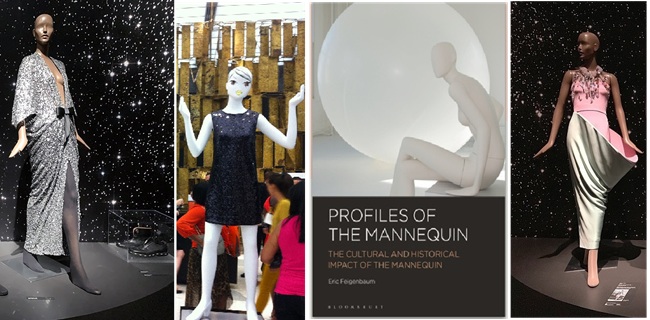By Anna & Maria Sciacca
The book “Profiles of the Mannequin” written by Eric Feigenbaum and released by Bloomsbury Publishing, drives us into the secret and glamourous world of mannequins. The book’s cover uses one of Ralph Pucci’s mannequin shows before he started his business as an art and furniture gallerist owner. In this book Eric Feigenbaum, through a study of the mannequin, featuring pictures and information, tracks the evolution of mannequins from the first models of 1900 right up to today’s virtual mannequins through the history of the department stores. Exploring shifts in representation of gender, race, and body type, this study chronicles the connection between mannequins and movements in art, the humanities, current affairs, and fashion, as well as cinema, photography, and television, have contributed to show window design and mannequin presentation. Some interviews with creative professionals recount their experiences, philosophies, and stories of the mannequin and its impact on our culture.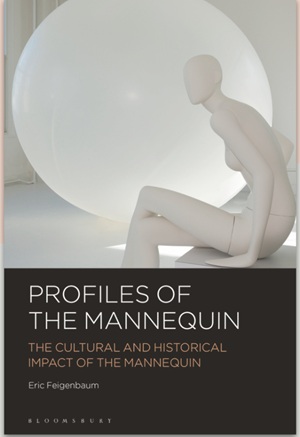
The author Eric Feigenbaum describes the mannequins with these enchanting words: “Yes, the study of mannequins is an interesting and intriguing topic. “Profiles of the Mannequin” goes beyond the history of the mannequin. Rather, it’s an anthropological study of our culture and the historical impact of the mannequin. These sculptural forms represent our past, our present, and even our future. If you were to hold a mirror to the face of a mannequin, the reflected image would be us. They’ve been referred to as the quintessential silent sales force, but they are so much more than fancy clothes hangers”.
Through a psychological study of the character of the mannequin, Eric comments: “They’re visions of style and grace, standing tall in the show windows of the most exclusive shopping avenues around the world. Their lives seem to be a fantasy woven by the hand of an artist or the pen of a poet. We live vicariously through them as they dress for the grand opening, the opera, the theater, or merely a day at the beach or an afternoon in the park. They’re always beautifully accessorized, wearing designer handbags and elegant shoes. They’re aspirational, they always seem to wear what we would love to own. Mannequins breathe life, emotion, and animation into retail environments across the world. In a way, they are snapshots of life. They give us hope. They allow us to dream. They permit us our aspirations. They are works of art that tap into the emotions and aspirations of all who engage with them. Mannequins herald our culture and celebrate it. They reflect our values, traditions, and conventions, they are representative of our culture. And while they never raise families of their own, and appear to be socially disconnected, they make a significant contribution to the social fabric and societal constructs of the times. Mannequins are an art form. And just as in great works of art, be it from the hand of Michelangelo holding chisel to stone, or the hand of Shakespeare holding quill to parchment, they convey reality through beautiful visions of fantasy”.
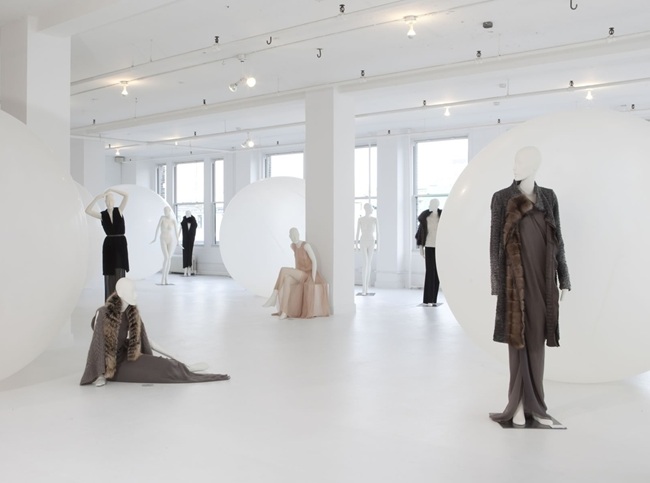
At the book party that took place on September 26th at Ralph Pucci showroom in Manhattan, New York, Eric Feigenbaum with Ralph Pucci introduced the book “Profiles of the Mannequin”.
Fond of music and fine art, Ralph Pucci has his own art and furniture galleries in New York, Miami, Los Angeles, and London. In 1976, at the beginning of his career as a designer for The Pucci Manikin Co., he started to produce with creativity and innovation various models of mannequins, collaborating with designers, fashion illustrators, and artists including Andrée Putman, Ruben Toledo, Jeffrey Fulvimari, Kenny Scharf, and Lowell Nesbitt. At his showroom, mannequins clothed and au naturel, painted and sculpted mannequins, are exhibited in different poses, in a variety of models; in 1986, he presented the metallic gold-toned sculpture “The Olympian Goddess”; in 1996 he presented the lovely vintage style “Camille” mannequin; in 1997 the “Dollies” collection; in 2000 the eccentric “Swirley”; in 2008 the “Girl” collection, and in 2013 the action mannequins “Motion” and many other models. 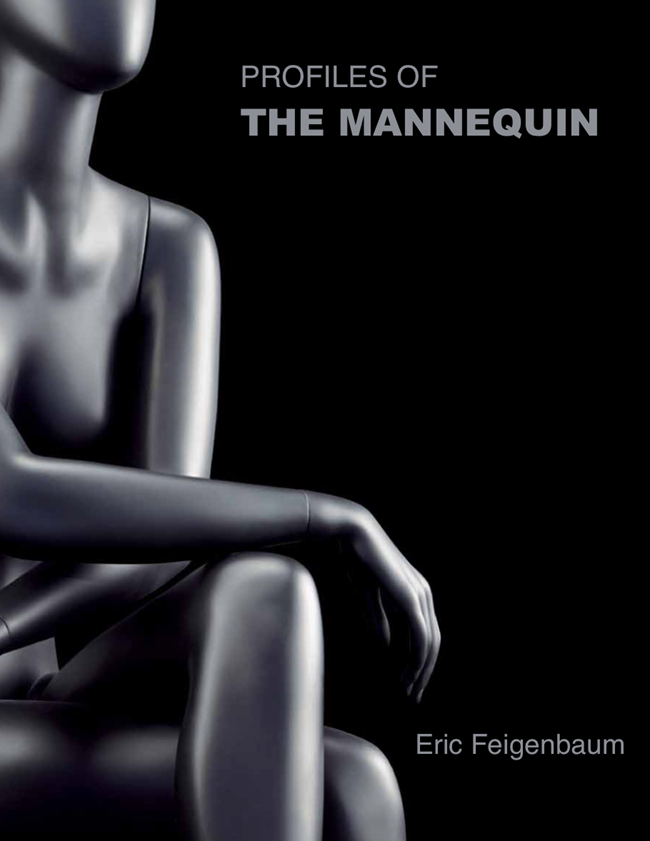
Ralph Pucci has transformed the mannequin from a subject for displaying clothing into an item of art and beauty. Most of his mannequins were on display at Joe Fresh’s store, the Brooklyn Museum, and at the exhibition “The Art of Mannequin” at MAD, the Museum of Arts and Design in New York.
Eric Feigenbaum, author of “Profiles of the Mannequin,” has great experience in creative work, including visual merchandising, store design, editorial, and education. He’s a recognized leader in store design and visual merchandising. After graduating in fine art and in architecture, he started his career in visual merchandising, then he worked as Corporate Director of Visual merchandising for Stern’s Department Store. He has been the Director of Visual merchandising for WalkerGroup/CNI, an architectural firm in New York City for store design worldwide, and is currently President and Director for his own retail design company Embrace Design. In education, he was the Chair of the Visual Merchandising Department at LIM College in New York, and taught store design at the Fashion Institute of Technology. In the editorial sector, Eric Feigenbaum is the New York Editor of VMSD (Visual Merchandising and Store Design) magazine, he has written many articles for fashion, department stores and visual merchandising and he also wrote reviews for Ralph Pucci’s books, “Wall” and “Show” published by Glitterati Inc. He has lectured at universities and colleges, and he has attended events, speaking at audiences across the world, in Brazil, Colombia, China, Australia, Spain, Chile, Mexico, Korea, Canada, Germany, Italy, and many other places. In 2012 he was awarded the highest honor, the Markopoulos Award for his professional and academic career in visual merchandising and store design. Eric is also a painter of expressionist landscapes, his colorful paintings in oil pastel on paper, bring the viewer into the canvas to explore other places.
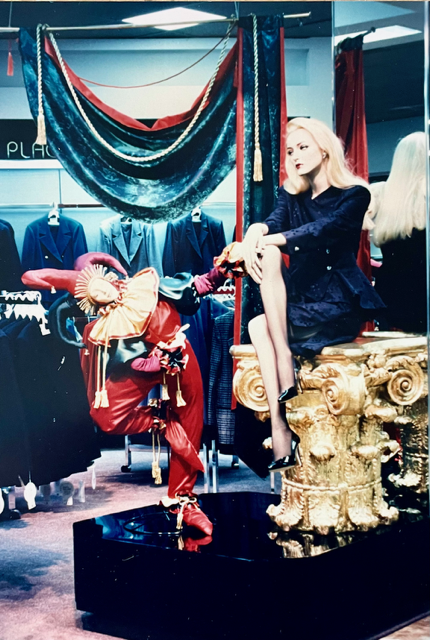
Like so many of his colleagues, Eric has been fascinated by the allure of the mannequin, his book also includes many of his own experiences with these seducing figures, he says: “They pose as actors on stage, interacting, if only silently, with all who pass. Inside the stores, they are magnets, drawing visitors toward them and through the selling zone. Some think of them merely as fancy clothes hangers whose only purpose is to give garments greater hanger appeal in the hope of tweaking the consumer’s aspirational desires. In some cases, they even have the power to change desired luxuries into absolute necessities, as they convincingly populate the selling floors in the role of the archetypal silent sales force. Others see beyond the surface, considering them sculptures or art pieces. While mannequins stand in place, they move the viewer through spirit and imagination to another place, another time, and another state of mind. While seemingly locked in place and time, they take us vicariously to a life that we would like to live”.
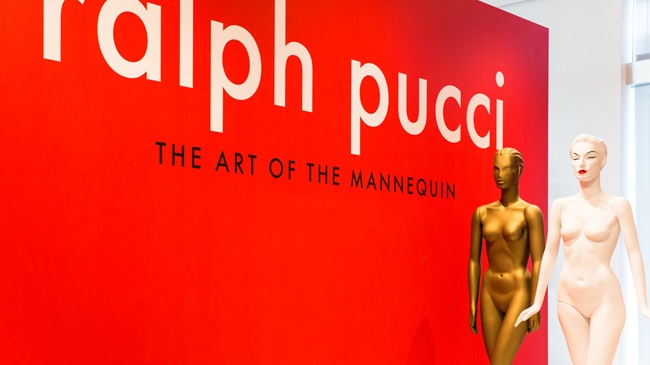
This book “Profiles of the Mannequin” is an exposé not only about these fabulous forms, but also about those who have worked with the mannequins, bringing these seemingly inanimate figures to life, and who have made significant contributions to the Art of the Mannequin. Eric Feigenbaum presents the topic of the Mannequins with the feeling of an artist and the professionalism of an expert on the subject.


